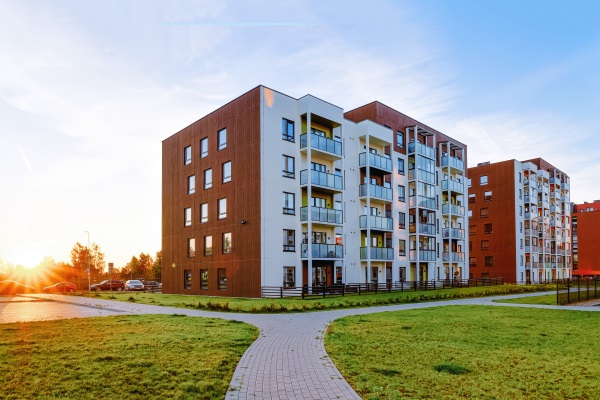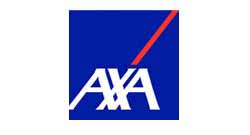
Managing let properties, particularly those housing homeless tenants and Houses in Multiple Occupation (HMOs), presents unique challenges for landlords. These properties often involve complex tenancy arrangements and higher risks, making appropriate insurance coverage essential. Insurance for such properties not only protects against potential financial losses but also ensures compliance with regulatory standards. This article aims to provide valuable insights into the specific insurance needs for properties accommodating homeless tenants and HMOs.
Understanding Let Properties with Homeless Tenants and HMOs
Definition and Characteristics:
Let properties accommodating homeless tenants and Houses in Multiple Occupation (HMOs) have distinct definitions and characteristics. Homeless tenants are individuals transitioning from homelessness to stable housing, often requiring support services to facilitate their adjustment. HMOs, on the other hand, are properties rented to multiple occupants who share common facilities like kitchens and bathrooms. These arrangements are prevalent in urban areas where housing demand is high, offering a cost-effective solution for renters and maximising income potential for landlords.
Challenges:
Managing let properties with homeless tenants and HMOs presents significant challenges. For homeless tenants, landlords must navigate complex tenancy arrangements and coordinate with support services to ensure successful tenancies. This demographic may have unstable rental histories or require additional support, increasing the complexity of management. HMOs also involve intricate regulatory and compliance issues, such as obtaining appropriate licenses and adhering to fire safety regulations. Both types of properties demand vigilant oversight to manage multiple tenancies, maintain property standards, and ensure compliance with local housing laws, making effective risk management and tailored insurance coverage essential.
Insurance Requirements for Properties with Homeless Tenants
 Standard Landlord Insurance:
Standard Landlord Insurance:
Traditional landlord insurance typically covers risks such as property damage, loss of rent, and liability claims. However, these standard policies often fall short when applied to properties with homeless tenants. The unique needs and potential challenges associated with housing individuals transitioning from homelessness can render standard coverage inadequate. For example, homeless tenants may have higher risks of accidental or intentional damage due to previous instability or lack of prior stable housing experiences. Landlords should be aware that without tailored insurance, they may face significant gaps in protection, leaving them vulnerable to financial losses and legal issues.
Enhanced Coverage Needs:
Accidental damage coverage addresses incidents such as broken fixtures or structural damage that might occur due to unfamiliarity with property maintenance. Malicious damage coverage is crucial for protecting against intentional damage that might arise from tenant dissatisfaction or behavioural issues. Moreover, standard policies often do not cover non-standard tenancy arrangements that are common with homeless tenants, who might have varied lease terms or be part of supported housing schemes. Ensuring these aspects are included in the insurance policy can provide comprehensive protection for landlords.
Public Liability Insurance:
Another critical component of insurance for properties with homeless tenants is public liability coverage. This insurance protects landlords from potential legal claims arising from injuries or damages sustained by tenants or visitors on the property. Given the diverse and often vulnerable nature of homeless tenants, the likelihood of incidents that could lead to claims may be higher. Public liability insurance can cover legal fees and compensation costs, providing crucial financial protection. It ensures that landlords are not personally liable for claims, thereby safeguarding their financial stability and allowing them to focus on providing stable housing solutions for their tenants.
Insurance Needs for Houses in Multiple Occupation (HMOs)
 Basic HMO Insurance:
Basic HMO Insurance:
For Houses in Multiple Occupation (HMOs), insurance requirements extend beyond those of standard landlord insurance to accommodate the specific needs of properties with multiple tenants. Basic HMO insurance provides coverage similar to conventional landlord policies but is specifically tailored to the complexities of managing multiple occupancies under one roof. This includes protection against property damage, loss of rental income, and legal liabilities associated with having numerous tenants. The insurance policy is designed to address the unique risks posed by the shared living arrangements in HMOs, ensuring landlords are adequately protected from potential financial losses stemming from the collective impact of multiple tenants.
Additional Considerations:
HMOs must adhere to stringent fire and safety compliance standards due to the higher number of occupants and shared living spaces, which increases the risk of incidents. Insurance policies for HMOs often include enhanced coverage for fire safety, ensuring that landlords meet regulatory requirements and are protected against claims arising from fire-related incidents. Additionally, liability insurance is crucial for HMOs, given the increased foot traffic and potential for accidents in shared spaces such as kitchens and corridors. Building structure coverage is also essential, as HMOs typically experience more wear and tear from higher tenant turnover and shared usage, necessitating insurance that accounts for increased maintenance and repair needs.
Risk Management Strategies for Landlords
Tenant Vetting:
Effective risk management for landlords begins with a thorough tenant vetting process. Screening potential tenants meticulously helps identify those who are likely to pay rent on time, respect property rules, and maintain the property’s condition. For properties housing homeless individuals, collaboration with homeless charities and support organisations can be beneficial. These entities often have insight into the backgrounds and needs of potential tenants, helping landlords find reliable occupants who are ready for stable housing. Proper vetting reduces the likelihood of tenant-related issues such as late payments or property damage, thereby mitigating risks and enhancing property management.
Property Management:
Proactive property management is essential in minimising risks associated with let properties, especially HMOs and those housing homeless tenants. Regular maintenance and inspections help identify and address potential issues before they escalate into costly repairs or safety hazards. Implementing robust safety measures, such as smoke detectors, fire extinguishers, and secure locks, is crucial to protect both the property and its occupants. Adhering to all relevant regulations not only ensures tenant safety but also maintains compliance with legal standards, which is vital for validating insurance claims. Effective property management thus helps in preserving property value and reducing the likelihood of insurance claims.
Provider Communication:
Maintaining open communication with insurance providers is a key strategy for managing risks effectively. Landlords should keep their insurers informed about any significant changes to the property, such as modifications, new safety installations, or changes in tenancy arrangements. Regularly reviewing and updating the insurance policy to reflect the current risk profile of the property ensures that coverage remains adequate and aligned with actual risks. This proactive approach helps prevent coverage gaps and ensures that the property is adequately protected against potential claims, thus providing peace of mind to landlords and securing their investment against unforeseen events.
Tailored insurance is crucial for landlords managing properties with homeless tenants and Houses in Multiple Occupation (HMOs), as it addresses the unique risks and complexities associated with these settings. Proactive risk management, including thorough tenant vetting, regular property maintenance, and compliance with regulations, is essential in mitigating potential issues and ensuring comprehensive coverage. Regular policy reviews help keep insurance aligned with the current risk profile. Landlords are encouraged to consult with Goldcrest Insurance to benefit from expert advice and bespoke insurance solutions, ensuring their properties are adequately protected and they are prepared to handle the specific challenges associated with these types of tenants and properties.




